Posted in Blog |
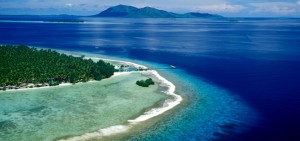
Introduction Phu Quoc is a very mountainous and densely forested Island of 1320 sq km; it is 48 km in length from south to north and has a population of approx. 80,000 people. Situated in the Gulf of Thailand 45 km west of Ha Tien on the Vietnamese mainland and 15 km south of the coast of Cambodia, Phú Quôc is ringed with some of most beautiful beaches in Vietnam, and offers the best seafood in the country. Phú Quôc Island served as a based for French missionary Pigneau de Behaine from the 1760-80s and at one time he provided shelter here for Prince Nguyen Anh (later Emperor Gia Long) when he was being hunted by the Tay Son rebels. During the Vietnam war there was little fighting here but the Island was used by the Republic of Vietnam Armed Forces as a prison for captured Viet Cong. Phú Quôc is not really a part of the Mekong delta and also doesn’t share the delta’s extraordinary ability to produce rice & fruit due to its soil quality and inaccessible terrain. It is, however, home to the best Fish sauce (nuoc mam) in the world, also reputedly known to produce high quality pepper and fantastic seafood. Another point of interest in Phú Quôc is the island’s native dog; this dog was originally a wild animal and later trained as a hunting dog by local people. These days they are very domesticated and it’s unusual to go anywhere on the island without seeing one of these dogs! These animals have unusually sharp teeth (as they tear their food when they eat it rather than bite) and have claws that over the years have been conditioned for catching their prey and are razor sharp. Phú Quôc is still what Phuket would be if it hadn’t been overrun by development. Phú Quôc island and its beaches was voted to be “The Most Cleanest and Beautiful Beach of World” by ABC News as from the end of February, 2008. However, this is about to change. There are extensive plans to develop Phú Quôc, including high-rise residential areas, several new towns and suburbs, complete rebuilding of Duong Dông’ city center, and replacing the existing small PQC airport. The new international airport south of Duong Dông is under construction and expected to open in 2013 or 2014. The main north-south road between Bai Thom and An Thoi is already being upgraded to a 2+2 lane highway, a new tared road from Duong Dông to Gan Dau is ready as far as Cua Can, which has a new bridge. A golf areal is planned as well as a casino in the north. A ferry connection to Sihanoukville (Cambodia) an visa-free-entry have been discussed in the past. Phú Quôc will be something completely different in 10 years if the current plans do materialize soon. Climate Phu Quoc Island...
Read More »
Posted in Blog |
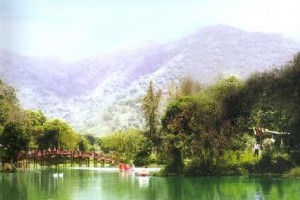
Introduction My Tho, considered as the quiet capital city of Tien Giang province, is the traditional gateway to the Mekong River Delta, owing to its proximity to Ho Chi Minh City. Famous in the town is the noodle soup Hu Tieu My Tho. It is typically a clear pork broth with rice vermicelli and wheat flour noodles combined. My Tho is also famous for its Bo Vien or beef balls. There are very busy stalls near the My Tho market that serve only Bo Vien in beef broth or with Hu Tieu noodle. It is eaten with very hot chilli sauce. As the regional capital, My Tho is the main market which receives all the produce from everywhere across the region as well as fish and seafood from My Tho‘s large ocean going fishing fleet. The very large and exuberant market is one of the biggest sources in Southern Vietnam for dried fish and other dried seafood products such as Muc Kho (dried squid). At night the market is dedicated to the dealing and sorting of Mekong River fish, particularly catfish for Ho Chi Minh City‘s wholesale markets. Produce, especially fruit and vegetables, is delivered by boat directly to the market. It can be said that My Tho is a popular starting point for tourists to take a boat trip on the Mekong River. How to get there and around Can Tho City is 34 km from Vinh Long Province, 63km from Soc Trang Province, 104 km from My Tho City (Tien Giang Province), 125km from Rach Gia City (Kien Giang Province), 62km from Long Xuyen City and 117km from Chau Doc Town (An Giang Province), 169km from Ho Chi Minh City and 179km from Ca Mau Province. There are many ways to get to and get around Can Tho. By Air There is now a functioning airport in Can Tho – Can Tho Airport (formerly Tra Noc Airport) which only offers connection between Can Tho and Hanoi. It is convenient if you transfer directly from Hanoi to Can Tho or vice versa. By Bus The bus station is about 2km to the north-west of the city centre, on Nguyen Trai Street. There are regular buses from Mien Tay Bus station in Ho Chi Minh City and other destinations in Mekong delta region including Can Tho. By boat Daily trips depart from Ho Chi Minh City at 11:30 am (Ninh Kieu Wharf; Tel: 713 821 476). Daily trip departs from Can Tho at 1.30pm and arrive in Ho Chi Minh City at 5:30pm (Bach Dang Port; Tel: 08-821 5609). Ninh Kieu Wharf also offers daily trips to surrounding places such as daily trip to Ca Mau (1 trip in a day), Vinh Thuan – Kien Giang (2 trips in a day), Long Phu (Soc Trang), Tra On (Vinh Long). By Car & Motorbike The ride from Ho Chi Minh...
Read More »
Posted in Blog |
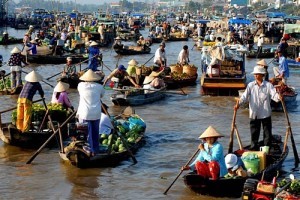
Introduction Cai Be is a river-land mixed town in Vietnam. It is a district of Tien Giang Province in the Mekong Delta region of Vietnam. Along the river, there are docks that handle passengers and goods, and the floating market. Cai Be is the north shore of the tree My Thuan Bridge, the gateway to the city of Vinh Long and the Cuu Long River Delta. Nearby Vinh Long, it is the bustling Cai Be Floating Market, where you can see wholesalers on big boats hang a sample of what they sell from the top of a long pole. It is also a leisure time for boating to see small canals and visit orchards. Cai Be is located on the left hand side of the Upper Mekong River with the population of 275.000 inhabitants (2004). Cai Be used to be the Administrative – Economic and Political Center of South Vietnam which called “Cai Be Dinh” (1732 -1757) and then Long Ho Dinh. Nowadays Cai Be is one of the most important centers for the distribution of the agricultural products, especially the tropical fruits for the whole country and also for the entire region. The nature is fertile, harmonious; people are opened-heart, hospitality; a distinctive ecological system and the river network of South Vietnam together with a floating market; the cultural features are very distinctive but really special in general are made Cai Be as a Mekong Delta in miniature, a safe and attractive destination for travelers all over the world. Visiting this place, travelers will have chance to enjoy the boat trip of on the mighty of the Mekong river for the dreamy and the pleasure moment. Please join with us to discover the “Countryside Civilization” where something news are waiting for your exploration. How to get there After 110km on the National Highway 1A from Ho Chi Minh City, travelers will arrive Cai Be being considered as a wild land where it is always ready waiting the discovery of the travelers. What to see Cai Be Floating Market It is among the others in Mekong Delta such as Cai Rang, Phong Dien, Phung Hiep Floating markets. Up to now, the history of Cai Be Floating Market is still unknown but people believe that it was formed during time of the formation of the delta in 17th to 18th century by people came from the Central of Vietnam. They were the founders of the delta who cultivated and settled down here for years. According to “Gia Dinh Thanh Thong Chi”, Nguyen Lord declared to build the Long Ho Town in Cai Be (called Cai Be Town) in 1732, Cai Be river mouth where located the Cai Be floating market stretching 500m long is the center for many boats in the delta gathering and trading. This is the place for more than 400 boats doing the business everyday. It is...
Read More »
Posted in Blog |

Introduction Mui Ne is a nice resort area in Phan Thiet, near Ho Chi Minh City (south Vietnam). Northeast of Phan Thiet the coastal road climbs over the slope of a Cham-Tower-topped hill and descends onto the long, sandy crescent of Mui Ne Bay. The formerly little-inhabited beach south of the fishing village of Mui Ne proper has seen some serious development in the last 15 years. Now it is a 15 km long strip of resorts that line up like pearls on Nguyen Dinh Chieu street, shaded by coconut palms. The main resort strip lies between the addresses of 2 and 98 Nguyen Dinh Chieu and is actually named Ham Tien. Given the choice, nature would move the sand around, much to the dismay of some developers. Beach sand tends to migrate up and down the coast seasonally, leaving some (but not all) spots with just a concrete breakwater rather than sandy beach. There is always a good sandy beach somewhere along this 10 km beach. Accommodations at higher addresses tend to be smaller and less expensive, somewhat removed from the main tourist section and more mixed in with local life. If a sandy beach is important to you, some research is called for before booking in that area. A few bargain hotels have popped up on the inland side of the road, across from the beach-side resorts. If you stay on the inland side, you will need to pass though one of the resorts to reach the beach, which might or might not result in some hassle from the guards. The resorts jealously guard their lounge chairs and palapas, though the beach itself is open to everyone. If all else fails, you can always access a nice sandy stretch of beach via the Wax Bar at 68 Nguyen Dinh Chieu. How to get there By bus Many overseas visitors reach Mui Ne via “Open Tour” buses that run between Ho Chi Minh City and Nha Trang. Most depart from HCMC between 7:30 and 9:00AM or PM. In the opposite direction, buses typically depart from Mui Ne around 2:00PM or AM and arrive in HCMC at 7:00PM or AM~ five hours at night or in the morning.The buses stop in the heart of the tourist strip in Mui Ne, so there is no need to take a taxi. The cost is about US$6 (105,000VND – Vietnamese dong) each way, and tickets are sold all over the tourist districts of both HCMC and Nha Trang.Several companies run buses directly to Mui Ne, popular with both locals and travellers alike. In HCMC they depart from the Pham Ngu Lao area (where you can also find their ticket office) and in Mui Ne they’ll drop you off and pick you up from your hotel. By train A train runs daily from HCMC to Phan Thiet, departing at 6:50AM and arriving four...
Read More »
Posted in Blog |
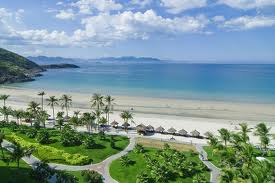
Introduction Nha Trang is a small city belongs to Khanh Hoa province on the South Central Coast of Vietnam. It is known as a beautiful coastal city in Vietnam and in the world. The city is just 265,47 km2, and 392,000 inhabitants. Since locating in the middle part of Vietnam which is easy to come from Hue, Hoi An, Da Nang and move to the South, Nha Trang is compared as a precious Pearl of Vietnam tourism. In the history, Nha Trang was known as Kauthara under the Champa hundreds years ago. Until now there are still a lot of heritages and Champa culture remaining here, especially Po Nagar towers . Nha trang had used to be small fishing villages before the French recognized that the place is an ideal for relaxing on beautiful beaches, they decided to invest to turn the town into resort city. The position of Nha Trang is evaluated as one of the most beautiful Bay in the World, because of heavenly beaches , hot spring, the colorful beauty of the sea as diversity of fish, coral reef,… and nice weather during the entire year which is favorable for some activities like swimming, sunbathing, scuba diving and snorkeling. Nha Trang is known as center of entertainment with series of Vinpearl land, Tri Nguyen Aquarium, Hon Tam resort,… . Besides, Cam Ranh Bay is considered as one of three harbors that have the best natural conditions over the world. Having the area of over 60 square kilometers and the 18-20m average depth, this bay is out of the wind as a result of being surrounded by many mountain ranges. Van Phong Bay has a wonderful nature, temperate climate, idyllic beach with mostly fine sand, surrounded by hills, mountains and tropical forests, colorful coral reefs, several vestige of salt-watered forest, specific and valuable sea creatures, which is endowed with an ideal environment. These are great potentials for the development of ecological tourism in Van Phong. How to get there By plane Cam Ranh Airport (CXR), built on the grounds of an old American airbase in 2004, is located 30km from the city and serves only domestic destinations. Taxi fare from the airport to downtown locations is a fixed rate of 380,000 VND, though many hotels have their own buses. Do not offer to go by the meter here as it is about 100,000 VND more expensive than the fixed rate. Try to take a Mai Linh taxi as the Airport taxi drivers will quite often try to take advantage of you in some way. A cheaper option is to take the airport bus at 60,000 VND to the old Nha Trang Airport. They sell the tickets for this mini bus at a desk near the exit of the airport. The old airport terminal is in the city not far from most hotels and taxi’s can be found...
Read More »
Posted in Blog |
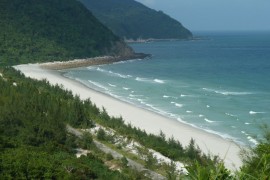
Introduction One of the outlying islands of the Ha Long Bay region and technically in Bai Tu Long bay, Quan Lạn has been sparsely inhabited for quite some time. There are a few thousand residents and an influx of local tourists from Hanoi on weekends and holidays. The island itself is pretty sandy and has little in the way of forest, unlike others nearby such as Ban Sen. Today, ports exist both at the northern and southern tips of the island. It is a less developed and less touristy alternative to the more popular Cat Ba Island. There are two larger villages on the island with some scattered houses and guesthouses on the roads in between. Minh Chau village is in the north and has a strip of hotels, guesthouses and cabanas along the white sand beach. Quan Lan village is in the center of the island with a street of guesthouses, restaurants, and karaoke venues. The Son Hau beach area has a few resorts and guesthouses near its white sand beach. The beaches of Minh Chau and Son Hau have been claimed to be some of the best in northern Vietnam, if not all of Vietnam, by locals and foreigners alike. How to get there Buses leave for the ports in Halong City and Cai Rong from Luong Yen or My Dinh bus stations in Hanoi. For the Halong City port, catch a bus going to “Hon Gai” which will take about 4 hours. From Hon Gai (Halong City) the ferry leaves at 1 or 1:30 PM and comes back at 6:30 AM (or at 6:15 AM in the summer) and takes around four hours. As of May 2012 the price is 70,000 dong for Vietnamese and 130,000 dong per person for foreigners. This route gives you a scenic boat ride through Bai Tu Long bay and drops you off at the port just south of Quan Lan village. For the Cai Rong port, catch a bus going to Cua Ong and tell the staff you want to get off at “Cho Cua Ong” (Cua Ong market) and they will drop you off at an intersection in front of taxis that can take you to Cai Rong town about 12 km away. The trip will take 5-6 hours to get to this point. From Cai Rong port there is a ferry at 7 AM (or 6:30 AM in the summer) and 2 PM. Boats from Quan Lan going back to Cai Rong leave at 7 AM (or 6:30 AM in the summer) and 2 PM. The ferry takes two hours. There is a speed boat that makes the trip in 45 minutes that leaves at 7 AM, 8 AM, ! PM and 2 PM from Cai Rong for 140,000 dong per person. Return boats leave around similar times. Private wooden boats can also be chartered for 1,600,000 dong...
Read More »










